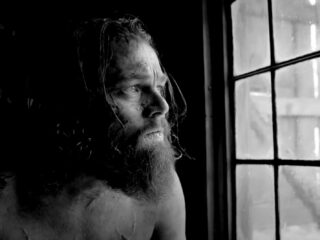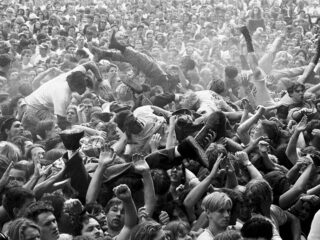Profound wilderness, homeostatic signals, unconventional genealogies, and complete spirits
Introduction: The Calling
The calls to ‘unleash creativity’ or ‘unlock creativity,’ as if it were some captive enchantment, seem to be everywhere. I perceive this as a symptom of the clickbait era, the relentless pursuit of attention-grabbing content, the indiscriminate use of hashtags, and perhaps, the ascent of the content ‘creator.’ However, I suspect that, above all, it is a consequence of the corporate world recognizing the value of creativity in the workplace or as a means to embellish bottom lines. Regardless of its origin or motivation, this saturation appears to remain superficial, much like a facsimile or an imitation of what was once undeniably authentic, intended to tantalise or momentarily satisfy our senses. Consider, for instance, my pet hate: the proliferation of simulated wood ‘effect’ flooring.
Similar to ethnicity or diversity, profound creativity is not a commodity to be acquired in an attempt to mimic virtuosity, nor is it something that can be learned or simply adopted. It is an intrinsic element of our human nature. I go even further and posit that deep creative intuition is the powerful force of survival that resides within each of us, an inherent part of our very existence. Grasping this innate nature is just one of the initial steps toward enabling the complete embodiment of our creativity.
Eccentric Channeling
Deep within each of us, our intuitions, instincts, and neurological predispositions can be traced back to our ancient and primordial survival skills, much like how our DNA can be traced to our genetic ancestry. We are the natural descendants of warriors, leaders, followers, hunters, and nomadic gatherers. However, regardless of the broader course of human evolution, nature introduced the gift of creativity as a means to problem-solve, foresee consequences, and refine methodologies to mitigate suffering and extinction caused by the elements and predators. It’s a remarkable gift that defines our innovative existence, something uniquely human. However, this precious intuition has been gradually eroded, selected out of us by the allure of convenience, complacency, and the pandemic of consumerism and commodification. In the industrialised and automated age, the need for that creative gene has waned, as our genetic predispositions lean towards a connection with machines, exploitation, or administration.In contrast, the resilient individuals within society, those whose unconventional genealogies couldn’t quite adapt to the demands of industrialisation and subsequently veered away from the traditional labour force trajectory, struggling to conform to societal norms, became the eccentrics, the ones who dared to think differently. Often perceived as square pegs and troublemakers, they once again became highly reliant on their creative instincts and inclinations as a means of survival. Whether formulating theories of relativity, envisioning women’s rights, innovating new music and fashion genres, or delving into modes of profound self-expression, individualism, and deep contemplation, they thrived as beacons of possibility.
No matter which channel of creative existence one pursues, it represents the body’s automatic and instinctive embrace of creativity as an unintentional survival mechanism kicking in. We no longer harness our creative powers to fashion animal traps or carve out protective shelters in the wilderness. Instead, we morph our creativity in ever-diverging ways to shield ourselves against the perils and tumultuous currents of the current age.
Embodied Cognition
For many ‘creatives,’ especially seasoned artists who primarily express themselves visually, the desire to create is intricately linked to a sense of self-actualization, a vivid journey of exploring and pursuing one’s true potential. While admittedly, this isn’t a fully understood science, and I would argue possibly not meant to be understood, influential theories propose that “emotional states are a result of physiological changes occurring within the body,” or that Interoception refers to the process of “afferent signalling, central processing, and the neural and mental representation of internal bodily signals.”
These concepts may forever remain entangled in the dance of scientific rationalisation through complex theories, but in simple layman’s terms, this is what I refer to as ‘creative embodiment.’ It’s the realization that these seemingly eccentric and divergent characteristics are the enduring and essential creative markers needed in a hyper-industrialised society that is unwittingly engineering its extinction.
Homeostatic Balance
Creative embodiment is the deep and internal, impulsive sensation that wells up within us when we engage in the act of creation. It transcends well beyond the surface of our thoughts and actions; it is the culmination of our evolved impulses and instincts that are unique to our genetic makeup. It is that innate and indiscriminate urge to imagine, envision, and create—an uncontrollable force as automatic as breathing for highly creative individuals.
As we enact our creative journeys, grappling with comforts and discomforts, inspiration and desperations, and explore expression, we come to understand that creativity is not necessarily a mental muscle but a profound embodied spirit flowing through our veins, a whole body, mind-body enactment of existence. It is as essential and internal as the homeostatic senses for hunger, thirst, pain, well-being, and desire, along with subtler feelings of existence. These are regulatory states closer to homeostatic balance. For the creative, creative impulses become a physiological response, a means of expressing one’s emotions and inner experiences by seemingly eccentric means, which, in turn, aid individuals in processing their feelings and achieving emotional equilibrium.
Profound wilderness
To fully grasp the gravitas of what I’m conveying here, we must also envisage the profound complexity of the times we find ourselves in. It’s the profound intangible complexity of high-speed intricacies and systems that envelop us—whether compounded societal pressures, the relentless flow of information that we’re immersed in, or the exponential influence of machines. For all of us swimming these rapids, coming up for air and finding calm for deep contemplation and introspection can feel wildly unobtainable.
However, a pivotal insight for creatives here is the significance of carving out and actively ‘creating’ undisturbed space for deep reflection. Both the subconscious and the creative spirit require this time to process, gather, and sift through the impulses and instincts that define the creative being and unique modes of expression. By granting our creative spirit permission to reconnect with instincts, intuitions and impulses, we can, quite literally, embody our creative selves, which is indispensable for us in navigating the wilderness we inhabit.
Conclusion:
Complete Spirits
The realisation that one can embrace the concept of creative embodiment may be as profound as stumbling upon a nonduality meeting. It has the potential to fundamentally transform our relationship with our existence, our creative output, our life paths, and the whispers that guide us. It is an acknowledgement that our embodied power is neither a learned nor mastered skill, not a mere emotional dial to be controlled, and certainly not an untamed beast, as the clickbait asserts. Instead, it is an intrinsic element of our makeup, as unique and interlaced with our physiology as our DNA.
By comprehending and nurturing this model of the complete self, we can enact a more embodied potential to enrich our pursuits, whether through thought, action, or material creation. In essence, creative embodiment is the process of discovery and embracing the creative spirit within us. It’s a simple yet profound message that, somehow, has been obscured in the haze and hyper-messiness of this wilderness…
Creative embodiment is the key—not to unlocking, not to unleashing, nor any of that jingoistic rhetoric, but rather the key insight to us understanding and becoming complete creative spirits once more.




